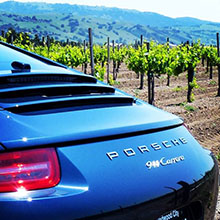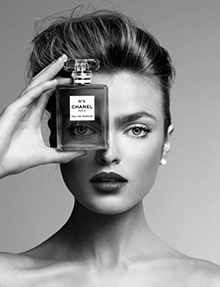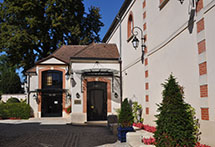|
| |
| Recent Labels |
| |
| Non-Vintage |
| |
| Nicholas Francois Billecart |
|
|
|
|
| |
| |
| |
Billecart-Salmon Brut Sous Bois Champagne
Billecart-Salmon Brut Sous Bois is a full bodied and sophisticated champagne. It has a creamy texture but not 'oaky'. It is ideally paired with food. Billecart-Salmon Brut Sous Bois details are presented along with ratings.
| Billecart-Salmon Brut Sous Bois |
| Type |
|
|
|
|
| Category: |
Basic |
Prestige Cuvée: |
No |
|
| |
| Ratings (on a scale of 100) |
|
|
|
|
| Champagne 411 |
92 |
Nov. 2103 |
|
Average Retail Price |
| Wine Enthusiast |
95 |
12/01/13 |
|
(750 ml bottle) $80 |
| Wine Spectator |
92 |
10/31/13 |
|
|
|
|
|
|
|
|
Tasting Notes
Appearance: Deep golden/yellow with a persistent very fine bead.
Aroma/bouquet: Ripe apple, lemon, toast, brioche, spice.
Palate: Apricot, strawberry, toffee, wet stone minerality. Complex.
Additional comments: Full bodied and sophisticated. Best served not too cold with some time and space to open up. Creamy texture but not 'oaky'. Ideally paired with food.
When to drink: Billecart-Salmon Brut Sous Bois Champagne is ready to drink at release and through the next 6 to 8 years.
| Brut Sous Bois Details
Label: Billecart-Salmon Brut Sous Bois
House/Winery: Champagne Billecart-Salmon
Wine Category: Sparkling Wine
Region & Country: Champagne, France
Type (Style): Non-vintage
Sweetness Level: Brut
Dosage: 7 grams per liter
Prestige cuvée: No
Vineyards: NA
Grapes: Chardonnay, Pinot Noir, Pinot Meunier (approximately equal parts)
Alcohol: 12%
Go to Champagne Details for a description of the above types, characteristics, and grapes. |
Billecart-Salmon Brut Sous Bois
Production
Billecart-Salmon uses the méthode champenoise for their champagne production. The Brut Sous Bois is composed of approximately equal parts Chardonnay, Pinot Noir and Pinot Meunier along with a portion of reserve wine. Sous Bois translates to "under wood". The primary fermentation is entirely in oak barrels then kept for 6 months on the lees in the barrels with lees stirring (batonnage). Malolactic fermentation may or may not occur with part of the cuvee at the discretion of the winemaker. For example with the 2008 based wine, malolactic fermentation occurred with the Pinot Meunier portion only, while the 2006 based wine had no MLF. Dosage is approximately 7 grams/liter. The closure is DIAM cork instead of natural cork. DIAM is made by combining tiny granules of cleaned cork with synthetic microspheres. The process minimizes faults such as Trichloroanisole (TCA or 'corked wine'). |




